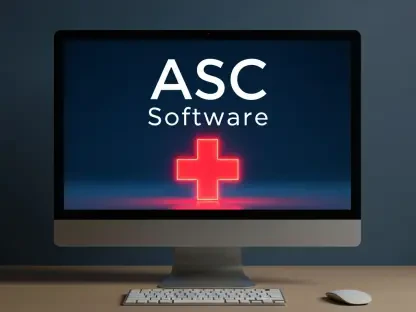Revolutionizing Healthcare with SaaS: A Critical Market Insight
Imagine a world where hospitals operate with seamless efficiency, patient data is instantly accessible across continents, and medical costs are significantly reduced—all through the power of cloud technology. This is not a distant dream but the current reality unfolding in the healthcare industry, driven by Software-as-a-Service (SaaS) solutions. As of 2025, the healthcare sector is witnessing an unprecedented shift toward digital platforms that promise scalability and innovation. This market analysis delves into the growth trajectory of Healthcare SaaS Solutions over the next decade, exploring key trends, data-driven projections, and strategic implications. The purpose of this examination is to equip stakeholders with actionable insights into a market poised to redefine how healthcare is delivered and managed globally.
Deep Dive into Market Dynamics and Growth Projections
Surging Adoption: The Engine Behind SaaS Expansion
The Healthcare SaaS Solutions market is experiencing robust growth as of 2025, propelled by an urgent need for operational efficiency in an increasingly complex industry. Industry data suggests a strong Compound Annual Growth Rate (CAGR) over the next ten years to 2035, reflecting widespread adoption among hospitals, clinics, and individual users. The primary catalyst is the ability of SaaS platforms to manage vast datasets, streamline administrative tasks, and ensure compliance with stringent regulations like HIPAA in the United States. Despite this momentum, challenges such as high initial costs and integration difficulties with outdated systems persist, particularly for smaller providers unable to absorb upfront expenses.
Market Segmentation: Tailoring Solutions to Varied Demands
Diving deeper, the market reveals distinct segments that cater to diverse needs, shaping growth patterns through 2035. Subscription-based models dominate among large medical institutions due to their predictable cost structures, ensuring budget stability for extensive operations. In contrast, the Pay-per-Use model is gaining ground with smaller entities and personal users who value flexibility over long-term commitments. Applications range from comprehensive electronic health record (EHR) systems in institutional settings to mobile health apps for individuals, with each segment presenting unique opportunities for customization and market penetration. Balancing affordability with innovation remains a critical factor in sustaining this segmented growth.
Regional Insights: Disparities and Opportunities Across Borders
Geographically, the Healthcare SaaS landscape varies significantly, influencing market strategies and expansion potential. North America holds a commanding share in 2025, underpinned by advanced infrastructure and high technology adoption rates that prioritize compliance and data security. Meanwhile, the Asia-Pacific region emerges as a hotspot for growth, driven by rapid digitalization, expanding healthcare access, and government-led reforms promoting technology integration. These regional differences highlight the need for tailored approaches—while mature markets focus on refining existing systems, emerging economies offer a canvas for scalable, cost-effective solutions over the coming decade.
Emerging Trends and Future Predictions
Technological Frontiers: AI and Telehealth Redefining SaaS
Looking ahead, transformative trends are set to reshape the Healthcare SaaS market through 2035. The integration of artificial intelligence (AI) into cloud platforms is enabling predictive analytics and automated workflows, enhancing decision-making for providers. Additionally, the sustained demand for telehealth, amplified by global health crises, continues to fuel innovations in remote monitoring and virtual care tools. Major technology firms are at the forefront, leveraging their cloud infrastructure to deliver secure, scalable solutions that meet evolving patient expectations and regulatory demands.
Regulatory Shifts and Strategic Collaborations
Another pivotal factor influencing the market is the evolving regulatory environment, which could either accelerate or hinder SaaS adoption. Global data privacy laws are tightening, pushing companies to prioritize security features while navigating compliance complexities. Simultaneously, strategic partnerships and mergers among key players are intensifying, as firms aim to broaden their service portfolios and geographic reach. This trend suggests that over the next ten years, the market will likely consolidate around a few dominant platforms capable of offering end-to-end healthcare solutions.
Long-Term Projections: A Digital Backbone for Healthcare
Projecting forward, the Healthcare SaaS Solutions market is expected to become an integral component of a fully digitized healthcare ecosystem by 2035. Forecasts indicate that cloud-based tools will not only support operational needs but also drive patient-centric care through personalized health insights and real-time data sharing. The challenge lies in addressing persistent barriers such as cybersecurity risks and ensuring equitable access across diverse economic landscapes. Success in this space will depend on the ability of stakeholders to innovate continuously while adapting to localized needs and global standards.
Reflecting on a Decade of Insights and Strategic Pathways
Looking back over the analysis conducted in 2025, the exploration of the Healthcare SaaS Solutions market revealed a sector on the cusp of monumental change. The robust growth trajectory, fueled by technological advancements and regional opportunities, underscored the transformative potential of cloud-based platforms. For stakeholders, the path forward demanded a focus on scalable innovations that prioritized security and integration. Businesses were encouraged to forge strategic alliances with local providers to navigate regional nuances, while healthcare institutions needed to pilot SaaS tools to assess impact before full-scale adoption. Policymakers, in turn, had to craft frameworks that balanced rapid digitization with robust data protection. These actionable steps laid the groundwork for a connected, efficient healthcare future, ensuring that the digital wave was harnessed effectively for global benefit.









